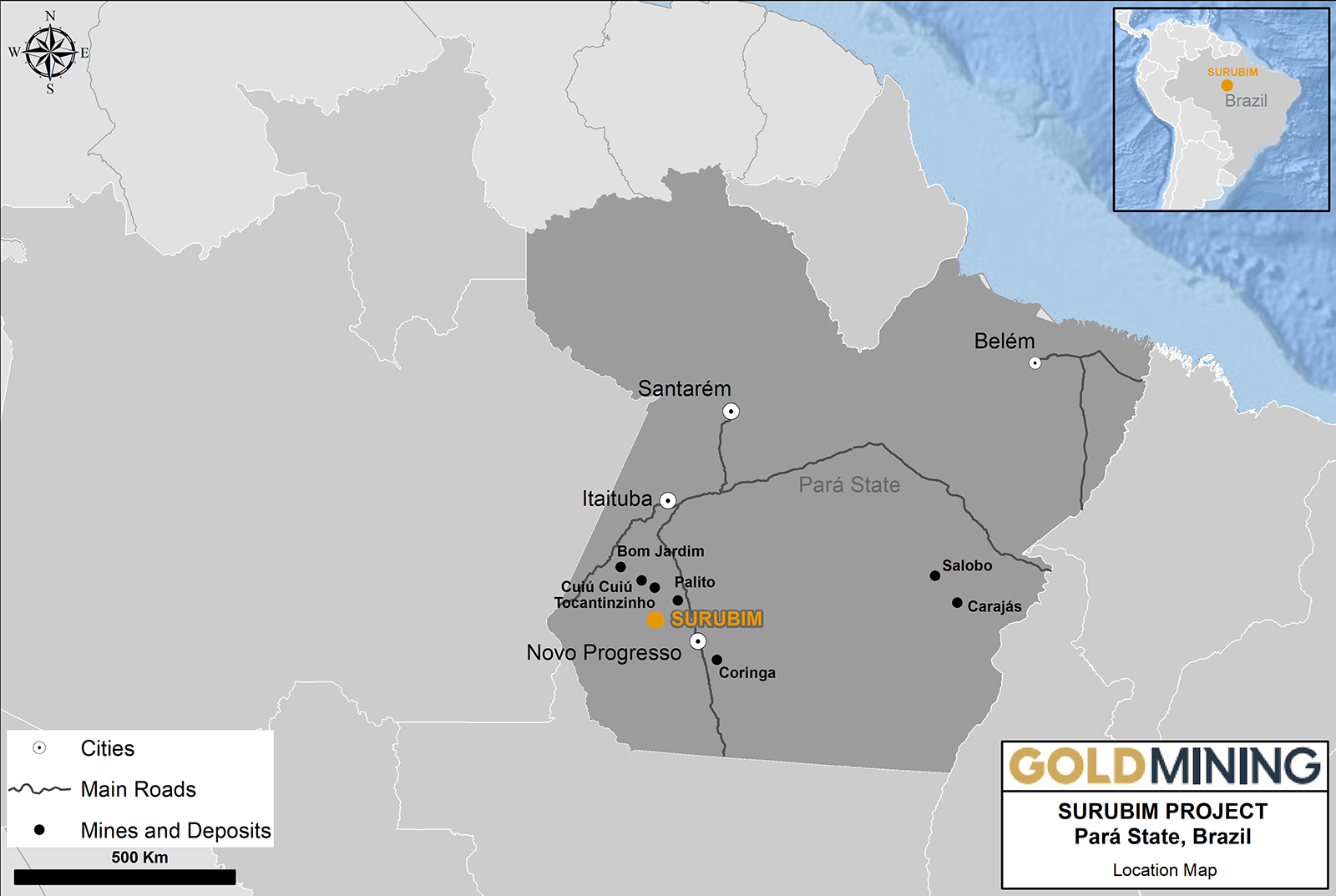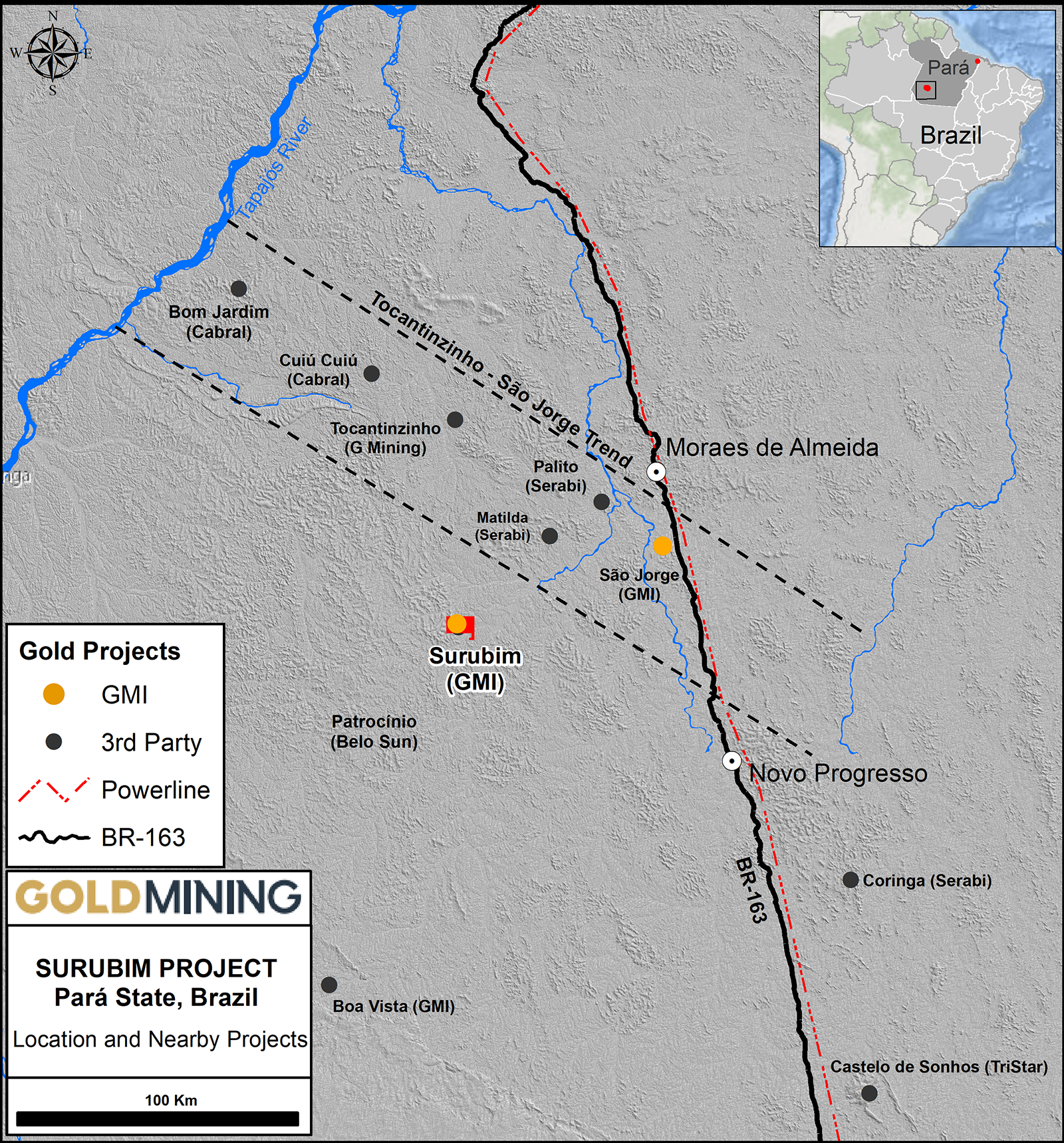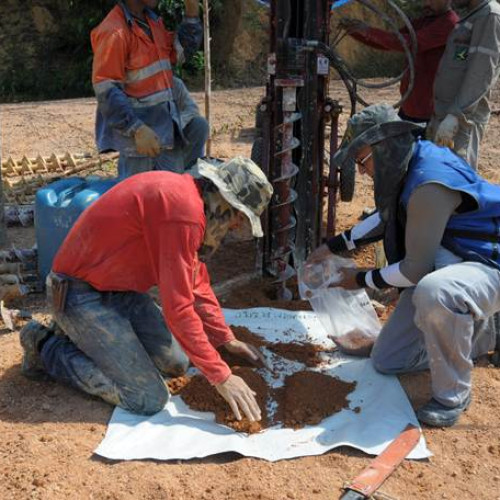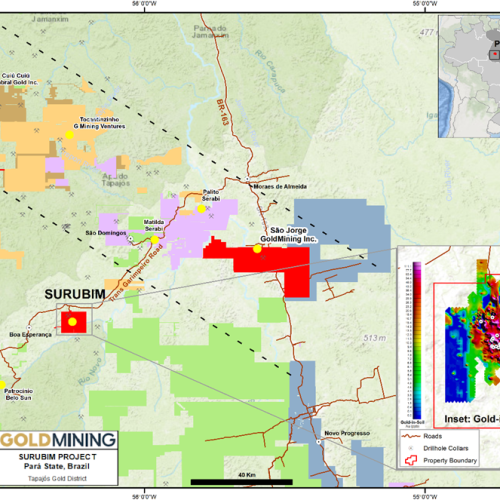Project Snapshot
Overview
The Surubim Project is located within the top-tier Tapajós Gold District, 65 km southwest of the Company’s advanced stage São Jorge project. The land package comprising of one exploration permit totals 6,400 ha (64 km2).
Historic drilling totals 48 diamond drillholes for 8,000m, plus an additional 6,000m of auger drilling to define shallow saprolite blanket mineralization. Exploration efforts include an extensive soil sampling program with over 3,000 samples, with gold-in-soil grades up to 25 g/t Au and over 53km of geophysics (IP).
Location
Tapajós Gold District in Pará State, Brazil
Property Size
6,400 ha (64 sq km)
Ownership
100%
Commodity
Gold
Infrastructure
All-year access by road, small airplane or boat. .
Deposit Type
Orogenic
Location
The Surubim Gold Project is located in the southeast of Pará State, Brazil, in the municipalities of Novo Progresso and Itaituba. The region is known as Tapajós Gold District and Surubim is located 275km south of the main regional city Itaituba. Access to the Surubim Gold Project from the cities of Itaituba or Novo Progresso is via highway BR-163, and gravel road, or via a 1-hour flight in a light aircraft from Itaituba.
The Project comprises one exploration permit covering an area of approximately 6,400 ha (64 sq km) in the Tapajós Gold District of Pará. The claim is 100% owned by GoldMining INC.

Tapajós Gold District
The Company’s 100% owned São Jorge Project sits at the center of the active and rapidly developing Tapajos Gold District. The region is estimated to have produced over 20 million ounces gold from artisanal mining of surface deposits, according to the Brazil National Mining Agency.
The now paved Hwy BR-163 has reduced hurdles for more traditional bedrock mine development in the region, including Serabi Gold plc.’s (“Serabi”) producing high-grade underground Palito Mine and G Mining Ventures Corp.’s (“G Mining”) Tocantinzinho open pit mine development project (G Mining Ventures Corp.) which is reportedly >75% constructed as of January 15, 2024.
Hardrock gold mineralization defined to date within the Paleoproterozoic Amazon Craton comprises structurally controlled hydrothermal deposits broadly regarded as being of orogenic type. However, growing evidence of copper-gold geochemical anomalies associated with magmatic intrusive centers has led explorers to target porphyry-style mineralization.
Both G Mining and Serabi have discovered porphyry style mineralization on their exploration claims, comprising the ‘Santa Patricia Copper Anomaly’ and the ‘Matilda Copper Project’ respectively. Reprocessed geophysical data from São Jorge indicates the potential for porphyry intrusive centers on the Project, analogous to the recently reported Matilda porphyry discovery located approximately 50 km to the northwest.

Geology and Mineralization
The Surubim property is underlain by granites and felsic volcanics. Stock work and disseminated gold is associated with pervasive alteration as well as shallow saprolite/colluvial blankets overlying bedrock.
Superficial saprolite and/or laterite blankets contain supergene gold enrichment resulting from the development oxidations from intense weathering of the bedrock rock substrate.
Gold Mineralization:
Gold mineralization is hosted in granitic rocks and is associated with northwest-southeast and east-northeast trending shear zones. Soil geochemical surveys have outlined a 3 by 4.5 km high tenor gold-in-soil anomaly covering several targets that have been tested by drilling (8,000m) which has defined several bedrock gold targets.
Mineralization is associated with quartz veins and hydrothermal alteration including chlorite, sericite, epidote and sulphide alteration within shear zones containing disseminated and fracture-controlled sulphides (pyrite, sphalerite, and chalcopyrite).
Activities:
- Historic core drilling completed: 48 holes (8,000 m)
- Extensive geophysical survey, 53,85km of Induced Polarization
- Extensive soil sampling program, over 3,000 samples with gold-in-soil grades up to 25 g/t Au
- Over 6,000 m of auger drilling
- Primary vein hosted bedrock gold deposits defined as well as large scale saprolite/colluvial mineralization identified.



